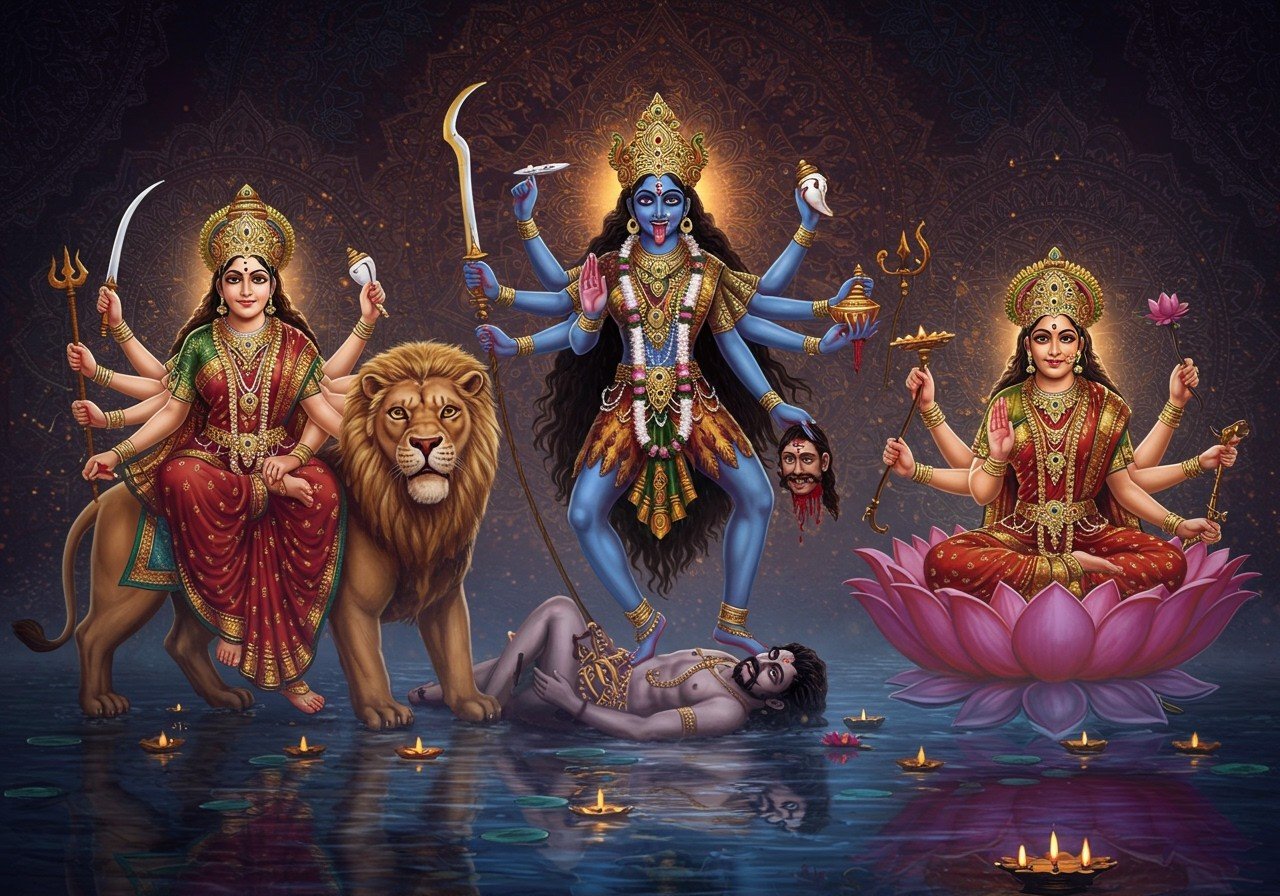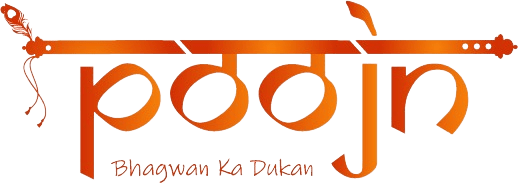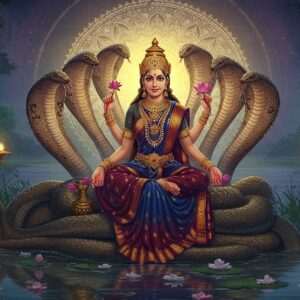
In Hindu mythology, goddesses like Kali, Durga, and Parvati hold a special place in our hearts. They
represent the divine feminine energy, known as ‘Shakti’. This energy is not just a concept; it’s a
powerful, creative force that influences everything, from our spiritual practices to our everyday
lives. Understanding these goddesses helps us connect with our rich cultural heritage and appreciate
their significance in history, religion, and even our own personal journeys.
Understanding Shakti: The Essence of Divine Feminine Energy
Shakti isn’t just another name; it’s the very essence of the divine feminine in Hinduism. It’s the
fundamental force that drives creation, preservation, and even transformation in the universe. Shakti
doesn’t just empower the gods; it empowers each of us. It manifests through various goddesses, each
with unique qualities, but all connected by this underlying energy. Recognizing Shakti in our daily
lives enriches our cultural and religious experiences. Think of it as the strength within, the
creativity that sparks innovation, and the power that shapes our world.
Kali: The Embodiment of Transformation
Imagine Kali, with her dark skin symbolizing the vast, uncharted cosmos, her eyes blazing with the
intensity of truth, and her wild hair flowing like the river of time. She wears a garland of skulls,
representing the ego we must transcend, and a skirt of arms, symbolizing the continuous cycle of
creation and destruction. In sacred texts like the Devi Mahatmyam, Kali battles demons, not just
external monsters, but also the inner demons of ignorance and fear. She is the fierce protector, the
one who destroys darkness to make way for light. In Tantric traditions, devotees seek her blessings to
break free from limitations and embrace their true potential. Kali’s energy is about
transformation, urging us to shed our old selves and embrace growth.
Durga: The Courage Within
Durga is the warrior goddess, the embodiment of strength. Her story resonates with the triumph of
good over evil. Picture her, with multiple arms, each holding a weapon, ready to face any challenge.
She rides into battle on a lion or tiger, fearless and determined. Durga’s image evokes courage, and
her spirit inspires us to stand against injustice and adversity. The Durga Puja festival, especially
vibrant in Bengal, celebrates her victory over the buffalo demon Mahishasura. This isn’t just a
mythological story; it’s a powerful symbol of hope and renewal, a reminder that we too can overcome
obstacles with inner strength. Durga is a symbol of the power we all possess within.
Parvati: The Nurturing Embrace
Parvati represents the gentle and nurturing aspect of the divine feminine. As Shiva’s consort and
the mother of Ganesha and Kartikeya, she embodies love, fertility, and devotion. She is the source of
nourishment, both physical and spiritual. In her form as Annapurna, she provides food and sustenance,
reminding us of the importance of caring for ourselves and others. In festivals like Teej and Karva
Chauth, we celebrate her unwavering devotion as a wife, showcasing the strength and beauty of
commitment. Parvati teaches us about balance, compassion, and the power of love in
relationships. She embodies the gentle strength that binds families and communities
together.
Interconnections: The Trinity of Shakti
Kali, Durga, and Parvati are not separate entities; they are different facets of the same divine
energy, Shakti. Along with Lakshmi and Saraswati, they form the Tridevi, a trinity of goddesses who
represent the full spectrum of feminine power. While Parvati nurtures, Durga protects, and Kali
transforms, they are all interconnected, showing us the cyclical nature of life, death, and
rebirth. They remind us that strength can be both fierce and gentle, and that change is the only
constant. This understanding brings balance to our lives, encouraging us to embrace all aspects of
ourselves.
Want to bring the blessings of these goddesses into your home? Poojn.in
offers a wide range of beautifully crafted idols of Kali, Durga, and Parvati, perfect for your personal altar or as a thoughtful gift for loved ones. Each idol is consecrated and ready for worship, allowing you to connect with the divine in your own sacred space.
Cultural Significance and Modern Relevance
Even today, Kali, Durga, and Parvati remain powerful figures in art, literature, and media. They inspire
conversations about gender roles, empowerment, and the importance of honoring tradition. They also
influence modern spiritual practices. Devotees find strength and guidance by connecting with these
goddesses online, seeking blessings and inspiration in the midst of modern life. They are reminders
of our heritage and the strength within each of us, helping us face life’s challenges with courage and
grace. Find authentic puja items and idols at poojn.in, enabling you to create a sacred space where you can connect with the divine feminine.
Embracing the Divine Feminine Every Day
The stories of Kali, Durga, and Parvati aren’t just ancient myths; they offer valuable lessons for
modern life. Embracing these symbols of the divine feminine connects us with the strength and wisdom
within. Whether it’s Kali’s fierce protection, Durga’s courage, or Parvati’s nurturing love, each
goddess provides unique inspiration. By honoring them through festivals, rituals, or even quiet
reflection, we invite their positive influence into our daily experiences. They teach us to face
life’s changes with strength and grace, empowering us to live with purpose and authenticity.
Exploring the Divine Feminine: FAQs
Are Kali and Durga the same? Not exactly. They are different forms of the same divine energy,
Shakti. Durga is often seen as the warrior goddess fighting evil, while Kali embodies a fiercer
energy, representing the complete destruction of negativity.
Is Parvati the same as Kali? While both are expressions of the goddess, they represent
different aspects. Parvati embodies nurturing love and gentleness, while Kali is the fierce protector,
showing the multifaceted nature of the divine feminine.
How are Kali and Shakti related? Kali is a manifestation of Shakti, the universal energy.
Shakti is the source of power and strength, and Kali is one of her most dynamic forms, specifically
associated with the destruction of ignorance and ego. Empower your puja with the finest quality hand-pankha from poojn.in.
What does Durga symbolize? Durga symbolizes strength, courage, and the power to overcome
challenges. Her image, often depicting her riding a lion or tiger and wielding various weapons,
represents her fearlessness in the face of adversity. She is a symbol of protection and hope. poojn.in provides all the necessary items for a proper Durga Puja, making it easy to honor the goddess with reverence and devotion. Learn about the fascinating Maa Lankeswari Temple in Odisha, a powerful shrine dedicated to the goddess, and delve deeper into the rich traditions associated with her worship.
Why is Kali depicted in a fierce form? Kali’s fierce appearance is not meant to scare us
but to represent the destruction of ego, ignorance, and everything that holds us back from spiritual
growth. Her image is a powerful reminder that change, even if it appears destructive at first, can
ultimately lead to liberation.
What is Parvati known for? Parvati is known for her love, devotion, and nurturing energy. As
the wife of Shiva and the mother of Ganesha and Kartikeya, she is revered as a symbol of family,
fertility, and the power of love. Her different forms, like Annapurna, highlight her role as a provider
and protector. Embark on a spiritual journey to India’s sacred Shakti Peethas, including the revered Mata Mansa Devi temple, and immerse yourself in the divine feminine energy that permeates these holy sites.
How do people worship Durga, Kali, and Parvati? Devotees honor these goddesses through
various rituals, prayers, and festivals like Navratri and Durga Puja. Specific mantras, offerings,
and practices are associated with each goddess, enabling devotees to connect with their unique
energies and seek their blessings.
What is the significance of Kali-Durga-Parvati in Hinduism? These goddesses represent the
divine feminine power, Shakti, in all its forms. They embody creation, preservation, and
transformation, reflecting the cyclical nature of life, death, and rebirth. Their stories and symbolism
teach us valuable lessons about strength, courage, devotion, and the importance of embracing change.
Looking for ways to deepen your spiritual practice? Explore the exquisite collection of Maa Tara murtis at poojn.in and bring the blessings of this powerful goddess into your home.


